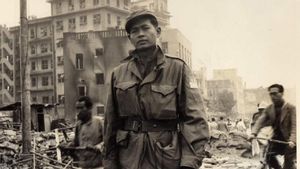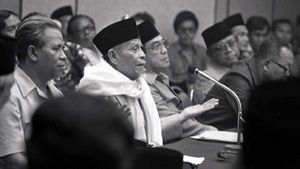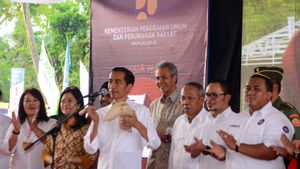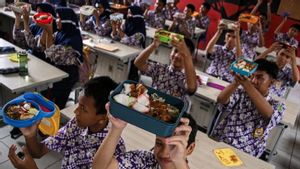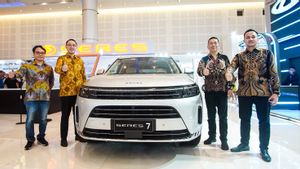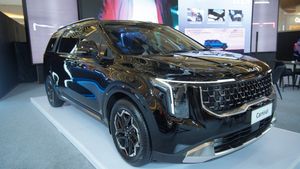JAKARTA - Dutch colonialists liked the way ethnic Chinese worked in the archipelago. The image of Chinese people working diligently is the source. This privilege made the Dutch interested in bringing in many Chinese people to drive the economy of the colony. Primarily, in trading.
This power lasts for a long time. Everything changed when quality Japanese products entered the archipelago in the 1930s. Japanese traders then took over the Dutch East Indies market. As a result, Japan 'shaken' the dominance of Chinese traders.
The existence of ethnic Chinese close to the Dutch colonialists has become an open secret. The presence of the Chinese has been blessed since the Dutch trading company, the VOC, planted the snares of colonialism on the archipelago in 1619.
Chinese people enjoy various privileges. From access to housing, work, to ease of paying taxes. This charm was given because Chinese people are tenacious in their work. Something the Dutch thought would bring huge profits.
Speak of the devils. The Company seemed to think far beyond its time. The Chinese were able to become the main driver of the economy in the Company's center of power, Batavia (now: Jakarta). Then it spread to other colonial areas. They are reliable in all fields. Primarily, trade.

Many of them later became successful traders. This condition lasted until the Company's power was replaced by the Dutch East Indies colonial government. At that time, nothing could shake the dominance of Chinese traders.
They control all trade lines in the archipelago. This privilege has made many Chinese people very rich. They have a lot of money and a lot of land. The narrative of how easy it is to earn a living in the archipelago is a motivation for Chinese people who have just arrived from their homeland.
They come with or without skills. Despite the massive arrival of Chinese people, there have been disputes in the past. However, the large dependence on the Chinese people made the Dutch give their blessing again.
“Even though the Chinese were an indispensable link between wholesale and retail trade in the Dutch East Indies, one can conclude from current indications that Chinese middle traders are trying more and more to drive direct imports. They became more familiar with large-scale trading methods, and although they would never put long-established firms out of business in strategic locations, like the Europeans.”
“But if necessary they can buy European houses from some of the monopoly profits, which they have collected. "In the future there will be many changes that could affect the world of trade in the Dutch East Indies, and time will tell," explained J. Stroomberg in the book The Dutch East Indies 1930 (2018).
Domination of Japanese Traders
The existence of Chinese traders lasted for a long time. However, luck is not always on the side of Chinese traders. When the economic downturn (malaise era) hit the archipelago in 1929, many Chinese traders went bankrupt.
This condition was then exploited by Japanese traders, who in fact were deliberately sent by the Japanese government as spies. They are prepared to compete in the field of trade. All their activities are fully supported by the Japanese government.
Capital investment was carried out massively. The Japanese also began to buy many concessions from timber trading to mining. The results are brilliant. Many Japanese entrepreneurs controlled the resources of the Dutch East Indies.
This power then became a way for products from Japan to flood throughout the archipelago. These include household furniture, bicycles, textiles, beer, cement, and so on. Japanese traders began to build many stalls and shops.
Friendly, friendly traders, stunning quality goods, and variety are a treat for Japanese people. Since then, many Dutch East Indies people, including native people, have chosen to shop at Japanese traders, rather than Chinese. Bumiputras feel comfortable shopping at Japanese traders because they are considered more sensitive to the suffering of colonialism and make a small profit.

Japanese traders also considered the move to dominate trade in the Dutch East Indies as a victory. Meanwhile, the Dutch colonialists themselves actually underestimated the existence of Japanese trader domination. Therefore, the Dutch East Indies were effectively controlled by Japan in 1942.
This was all because many of the traders had penetrated the intelligence agency which was intended to spy on and secure resources in the Dutch East Indies. Hoegeng Imam Santoso (later known as the 5th National Police Chief) had witnessed firsthand the existence of the Japanese military disguised as traders.
"I think Pekalongan people generally know Kagiyama as a Japanese trader who knows the art of dealing with buyers and potential buyers! He is a unique and unique example of that. And unimaginable other than a mere trader. "After all, anyone who knows Kagiyama in his shop will definitely be shocked when the Japanese military enters Indonesia."
"The real Kagiyama apparently wasn't a trader: in fact he was a Keigun major or major in the Imperial Japanese Navy who was stationed in Pekalongan and disguised himself as a grocery trader! He is like before, a stranger again in the eyes of those who know him, but he is still in a position that must be respected! Kagiyama in my eyes is very mysterious. "It can't be predicted," explained Hoegeng Imam Santoso, as written by Ramadhan K.H. and Ibrar Yusra in the book Hoegeng: Polisi Idaman dan Kenyataan (1993).
관련 항목:
The English, Chinese, Japanese, Arabic, and French versions are automatically generated by the AI. So there may still be inaccuracies in translating, please always see Indonesian as our main language. (system supported by DigitalSiber.id)





